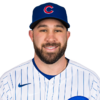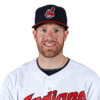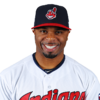
World Series 2016: Here's how the AL champion Cleveland Indians were built
The Indians have acquired most of their roster through the draft and trades

For the first time since 1997, the Cleveland Indians are the American League champions. They dispatched the Blue Jays in five games in the ALCS earlier this week. The Indians are now four wins away from their first championship since 1948. They'll play the winner of the Dodgers-Cubs NLCS in the World Series when it begins Tuesday.
Like every team, the Indians were assembled through all sorts of different methods. No team is built exclusively through the draft, or trades, or free agency. It's not possible. Teams need to have success acquiring talent through every avenue available. The Indians have done exactly that. Let's look at how the 2016 Indians were built.
The Draft
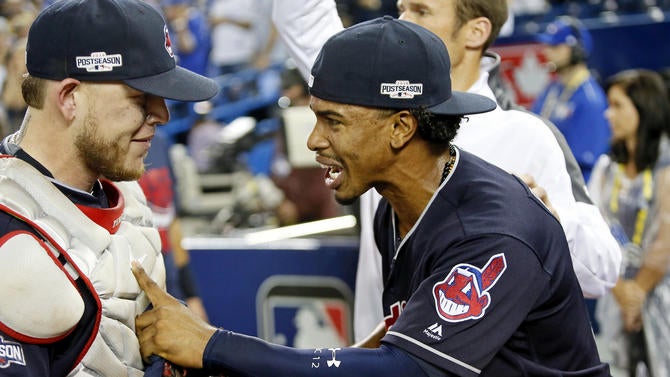
As a small payroll team -- the Indians were 24th in Opening Day payroll this year -- the annual amateur draft is incredibly important for the Indians. It's by far the best way for them to add cheap young impact talent. The Indians have to not only hit on their high selections, the first and second rounders, but they also need to add quality depth in the late rounds. They've been able to do that the last few years. Nine players from their ALCS roster were acquired via the draft.
Gosh, Cody Allen is some kind of player development story. The Indians selected him out of High Point University in North Carolina, where he was a starter who could spin a curveball and that's about it. They moved him to the bullpen and boom, Allen's fastball suddenly sat 96-98 mph, and he zoomed to the big leagues. Despite being a 23rd rounder, Allen was the second player from the 2011 draft to reach MLB. The only 2011 draftee who beat him to the show is now his teammate, actually. More on that guy in a bit.
A few picks prior to grabbing Allen, the Indians selected Cody Anderson from Feather River College in California. He made the opposite move as Allen: Anderson was a reliever in college who moved into the rotation in pro ball. He's been a solid depth arm for the Indians the last two years.
Lonnie Chisenhall's amateur career was ... interesting. He was an emerging star at South Carolina in 2007, but was dismissed from the team after being arrested and charged with grand larceny and burglary. Chisenhall and a teammate stole cash from an assistant coach's locker and electronics from a dorm room. He pled guilty and served six months probation. Chisenhall wound up at Pitt Community College in North Carolina and mashed, which is why he was Cleveland's first-round pick one year later.
Give the Indians credit. They've had a lot of success with position changes. Allen went from starter to reliever, Anderson went from reliever to starter, and Jason Kipnis went from outfielder to second baseman. He could always hit -- Kipnis had a career .376/.483/.688 batting line at Arizona State -- but the question was his defense and long-term position. With the help of the organization's coaches and instructors, he's found a home at second base.
The Indians lost 93 games in 2010, which gave them the eighth overall selection in the 2011 draft. They used that pick to take Francisco Lindor, who has since established himself as the franchise's cornerstone shortstop. Lindor was born in Puerto Rico and moved to the United States with his family when he was 12. The Indians selected him out of Montverde Academy near Orlando. They hit the jackpot with this selection.
Yet another 2011 draft pick. The Indians had a bunch of those on their ALCS roster. Ryan Merritt, who was selected out of McLennan Community College in Texas, was the hero in Game 5 on Wednesday night. He held the Blue Jays to two hits in 4 1/3 shutout innings. Not too bad for a 14th-round pick making his second big league start, eh?
Thanks to injuries elsewhere on the roster, Tyler Naquin made the team out of camp and spent most of the season as the Indians' everyday center fielder. He played so well that he's going to end up getting a healthy amount of Rookie of the Year support too. It was only four years ago that Cleveland selected Naquin out of Texas A&M.
First round picks get all the attention, but the late rounds are where championship teams are built. The Indians landed Roberto Perez, their starting catcher this postseason, with a 33rd-round pick in 2008. They plucked the defensive wiz out of Florida Gateway College near Jacksonville.
The Indians have done a really great job stocking their pitching staff with late-round picks. Josh Tomlin, a former 19th rounder out of Texas Tech, relied on command and guts to get to the big leagues with average stuff. He's now spent parts of seven seasons in the big leagues and is the team's No. 2 starter this postseason.
Trades
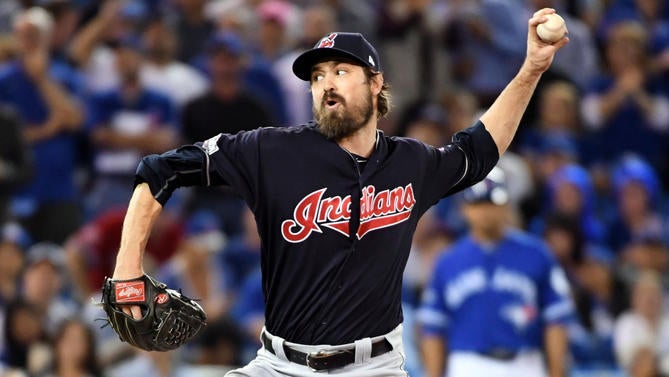
The Indians acquired more players on their ALCS roster through trades than by any other means. Cleveland has 11 trade pickups on their roster. They say the best trades are the ones that work out for both teams, and while that's true, the trades that work out far better than expected are the ones that lead to championships.
Remember when I said Allen was the second player from the 2011 draft to reach the big leagues? Trevor Bauer, the third-overall pick that year, is the one who beat him. Of course, Bauer was picked by the Diamondbacks, and he made his MLB debut with them in June 2012. He eventually wore out his welcome in Arizona and was traded to Cleveland in a three-team blockbuster:
Indians received: Bauer, Matt Albers, Bryan Shaw, Drew Stubbs
D-Backs received: Didi Gregorius, Lars Anderson, Tony Sipp
Reds received: Shin-Soo Choo, Jason Donald
The Indians essentially traded Choo, Donald, Anderson, and Sipp for Bauer, Albers, Shaw, and Stubbs. Choo had a phenomenal year in Cincinnati, but he was also a year away from free agency at the time of the trade. Cleveland is very happy with how this deal worked out.
What a steal Mike Clevinger has turned out to be. The Indians acquired him from the Angels for Vinnie Pestano a few years back. At the time Clevinger was a live-armed prospect who struggled to throw strikes and had some injuries. He's since blossomed into a very good pitching prospect -- Baseball America ranked Clevinger as the 71st-best prospect in baseball at midseason -- and a future member of their rotation.
Coco Crisp was a very late addition this year. The Indians picked him up from the Athletics on literally the last day teams could acquire a player and have him be eligible for the postseason roster. He's taken over as their everyday left fielder against righties.
Fun fact: Yan Gomes was the first Brazilian-born player in MLB history. He debuted with the Blue Jays back in 2012. They then traded him to the Indians after the season with Mike Aviles for Esmil Rogers. As poorly as Gomes played this year, yeah, I'm calling that one a win for the Tribe.
The Indians picked up Brandon Guyer from the Rays at the deadline for two prospects, outfielder Nathan Lukes and righty Jhonleider Salinas, to provide outfield depth and a big platoon bat. Guyer shares left field duty with Crisp.
It's not often the least known player in a three-team trade ends up being the most impactful, but here we are. The Indians acquired Corey Kluber, their ace and the 2014 AL Cy Young award winner, in a three-team swap with the Padres and Cardinals at the 2010 trade deadline. Here's the full deal:
Indians received: Kluber
Cardinals received: Jake Westbrook, Nick Greenwood
Padres received: Ryan Ludwick
That's a best-case scenario trade for the Indians. They traded Westbrook, who was due to become a free agent after that 2010 season, for Kluber straight up. Kluber was in Double-A at the time and now he on the short list of the best pitchers in the world. This is the kind of trade that elevates a small payroll club into a World Series contender.
It's hard to believe this is Zach McAllister's sixth season in the big leagues already. The Indians originally acquired him as a player to be named later; Cleveland sent Austin Kearns to the Yankees at the 2010 trade deadline, and a few weeks later, McAllister became that player. He's settled into a relief role the last few years after beginning his MLB career as a starter.
Was there a more impactful trade at the deadline this year? I don't believe so. The Indians paid a steep price to acquire Andrew Miller from the Yankees at the trade deadline. They sent four prospects to New York: outfielder Clint Frazier, lefty Justus Sheffield, and righties Ben Heller and J.P. Feyereisen.
Frazier and Sheffield are the headliners. MLB.com currently ranks them as the 15th- and 78th-best prospect in baseball, respectively. Heller spent time in the Yankees' bullpen in the second half, and Feyereisen will start next season in Triple-A. The Indians gave up a lot to get Miller, and boy, has he been worth it. He's dominated in the postseason, so much so that he was named ALCS MVP.
Dan Otero has been one of several unsung heroes for the Indians this year. He soaked up a lot of relief innings this summer and was generally excellent. The Indians acquired him from the Phillies for cash in the offseason. It was a minor move that has had a big impact.
The trade that sent Carlos Santana to the Indians at the 2008 trade deadline is still one the biggest head-scratchers of the last decade. Santana was hitting .323/.431/.563 as a full-time catcher at the Class A Advanced level at the time and was a consensus top-100 prospect. The Dodgers traded him and reliever Jon Meloan to the Indians for veteran infielder Casey Blake, who became a free agent after the season. Yikes. Santana doesn't catch any more, but he still provides the Tribe with big-time power.
(The Dodgers did re-sign Blake as a free agent, but that doesn't make the trade any better. They could have signed him that offseason anyway.)
As mentioned earlier, Shaw went to the Indians in the same three-team trade with the Reds and Diamondbacks that sent Bauer to Cleveland. Shaw has since taken over as a reliable setup man for manager Terry Francona. Not too shabby for the second piece in the trade.
Free Agent Signings
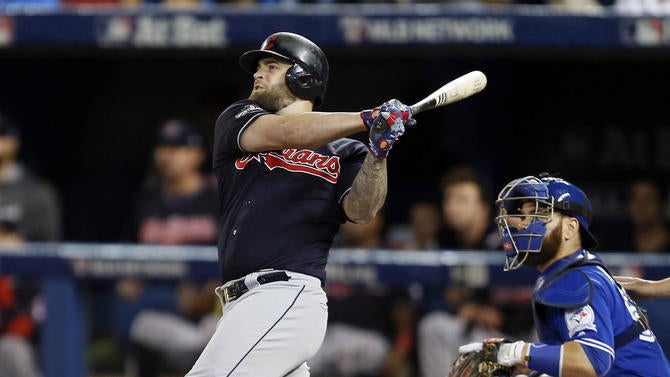
The Indians are not huge spenders in free agency by any means. They don't have the resources to spend big in free agency. This is the franchise that started the trend of signing young players to long-term contract extensions back in the 1990s, remember. That's the only way they can afford premium talent. Their recent free agent deals have worked out well, however.
The Tribe scooped up Rajai Davis with a one-year contract worth $5.25 million last winter and he rewarded them by leading the AL with 43 steals during the regular season. Davis has been platooning with Naquin in center field.
Two years ago the Indians plucked Jeff Manship off the scrap heap. The Phillies released him following an unsuccessful 2014 season and Cleveland scooped him up on a minor league contract. He has a 2.07 ERA in 85 games and 82 2/3 relief innings since. Minor league signings don't work out much better.
It's tough to believe Mike Napoli had to wait until January to sign this past offseason, isn't it? He was just sitting out there waiting for an offer. The Indians took advantage of the slow market, signed Napoli to an affordable one-year contract, then watched him hit 34 home runs and drive in 101 runs. I would not be surprised if the two sides work out a contract extension soon. Napoli is a perfect fit for the Indians and vice versa.
International Free Agency
The Indians are not a club that goes out and spends lavishly on international free agents each summer like bigger market teams, such as the Yankees, Dodgers and Red Sox.They're more reserved with their international spending, but they've still been able to find solid players.
There's no chance the Indians would be where they are right now with Jose Ramirez, who started the season as the utility man before taking over left field and later third base full-time. He was phenomenal in 2016. The Indians originally signed Ramirez as a 17-year-old out of the Dominican Republic, and he spent only three seasons in the minors before reaching the show. Pretty incredible.
Waivers
There is nothing sexy about waivers at all, but they are a good way to add depth players at essentially zero cost. Another team's roster crunch could mean an upgrade for your roster.
Michael Martinez has had an eventful year. He started the season with the Indians, then was traded to the Red Sox in July after being designated for assignment. After a month in Boston, the Tribe claimed Martinez off waivers after the Red Sox designated him for assignment. It's like he never left.
Other Notables
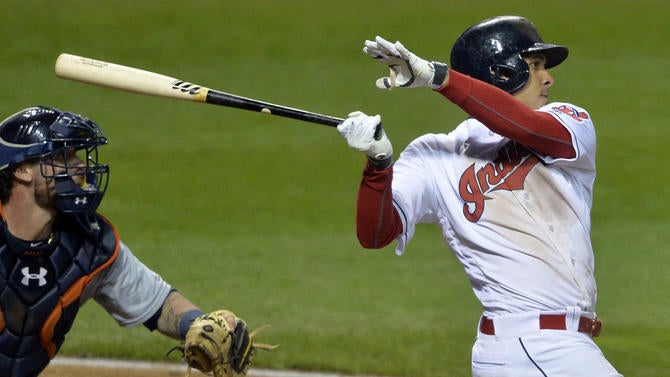
The 25 players above represent the 25-man roster the Indians used in the ALCS. It remains to be seen whether they will make any roster changes prior to the World Series. These days it takes way more than 25 players to get to the season though. Here are a few others who are not on the postseason roster, but played roles in 2016.
Coming into the season, Abraham Almonte was expected to be the team's everyday center fielder. He failed a performance-enhancing drug test in spring training though, which meant an 80-game suspension. That suspension opened the door for Naquin. Almonte returned at midseason as a reserve outfielder. Cleveland originally acquired him from the Padres at the 2015 trade deadline for veteran southpaw Marc Rzepczynski.
Almonte is healthy, but the PED suspension means he is not eligible for the postseason roster. That's a relatively new rule.
The Indians managed to win the AL pennant even though Michael Brantley, their best all-around hitter, was limited to only 11 games this season by shoulder surgery and subsequent setbacks. They were 11 ineffective games too. Sitting out this postseason run must be rough for Brantley. You know he wants to be a part of this. His shoulder won't let him though.
Anyway, the Tribe acquired Brantley in one of the biggest trades of the last decade: the CC Sabathia trade. In fact, Brantley was the player to be named later in that deal. The Indians sent Sabathia to the Brewers a few weeks prior to the 2008 trade deadline for Matt LaPorta, Zach Jackson, Rob Bryson, and a player to be named later. Brantley became that player after the regular season. Pretty good player to named later, huh?
Like Brantley, Cleveland acquired Carlos Carrasco in a trade involving an ace left-hander: the Cliff Lee deal. Lee went to the Phillies with Ben Francisco at the 2009 trade deadline for Carrasco, Jason Donald, Lou Marson, and Jason Knapp. It took Carrasco a few years to figure things out at the big league level, but since moving into the club's rotation in the middle of the 2014 season, he's been terrific.
Carrasco's season ended in September when a comebacker broke a bone in his hand. There's no chance he'll be healthy enough in time to pitch in the World Series.
Once Gomes went down with a shoulder problem, Perez and Chris Gimenez took over as the Indians' primary catchers. Gomes is healthy now, so he's on the postseason roster along with Perez. Gimenez is healthy in case someone gets hurt. The Indians picked him up in a cash trade with the Rangers.
Danny Salazar is a big-time player development success story for the Indians. They signed him out of a tryout camp in his native Dominican Republic back in 2006. He was rail thin and throwing about 87 mph, but the team liked his athleticism and the way his arm worked, so they gave him a $200,000 bonus. It wasn't long before Salazar developed into a top pitching prospect with upper-90s gas.
Like Carrasco, Salazar went down with an injury in September. He has a forearm problem. The good news is Salazar has been throwing bullpens and simulated games over the last few weeks, and there's a chance he will be healthy enough to be added to the World Series roster in some capacity, either as a starter or reliever.






